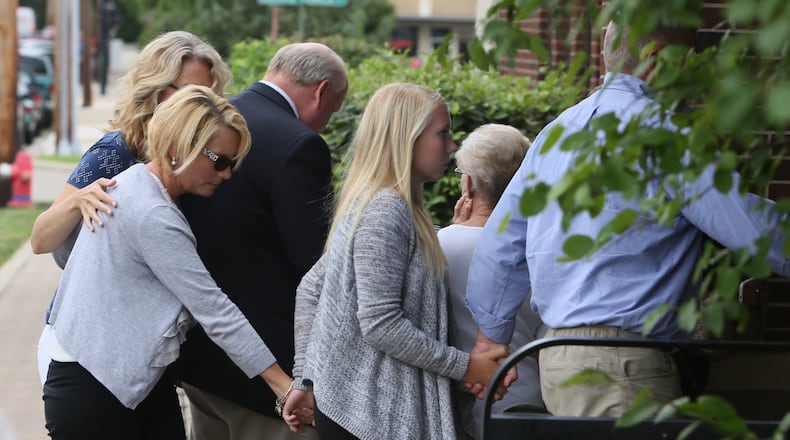“It’s really hard for us to even begin to estimate how common this is,” Meyer said. “We don’t know how many women did this and we just never found the body.”
RELATED: More than a dozen investigators working Carlisle baby remains case
It occurs many times a year that no one hears about,” she said.
Out of more than 200 cases of Ohio women who killed their children that Meyer studied for two books, 40 were neonaticides — in which a baby is killed within its first 24 hours of life.
Without knowing all the details of Richardson’s case —several court records remain sealed — Meyer said the situation as alleged in the criminal complaint seems to fit a common pattern.
“She’s in the typical age range of women who conceal or deny a pregnancy,” Meyer said of Richardson, 18, charged with reckless homicide.
Some women she interviewed even came to be in denial themselves about the fact that they were pregnant. Often there is a fear of physical abuse from a partner or family member or a fear, sometimes unfounded, that they will be emotionally rejected or ostracized by their parents or friends.
RELATED: Warren County buried baby case: 5 things to know
“The girls tend to be pretty immature,” she said. “They also tend to dispose of the infant near home. It doesn’t surprise me that this infant was in the backyard.”
Richardson’s attorney has declined to discuss specifics of the case, but he said his client was “a very good person.” The cheerleader graduated from Carlisle High School earlier this year.
The allegations against Richardson are reminiscent, according to Meyer, of other Ohio teens accused of concealing their pregnancies and killing their babies.
Rebecca Hopfer, of Centerville, was 17 when she delivered a baby girl at her home, wrapped the infant in towels and a plastic bag and threw it in the trash. The high school senior was convicted of murder and sentenced to 15 years to life in prison in 1995. But nine years later, then-Gov. Bob Taft commuted her sentence, and the parole board approved her early release. The teen maintained that her child was stillborn.
Hopfer’s sentence was more severe than other cases, Meyer said.
If convicted of reckless homicide, Richardson could face up to five years in prison.
MORE: Carlisle mom, 18, arrested, charged in Warren County baby-remains case
Audrey Iacona was a high school cheerleader in northeast Ohio when she was convicted in 1998 of involuntary manslaughter, child endangering and abuse of a corpse for placing her newborn, Joseph Bryan Iacona-Clink, in a plastic bag after giving birth in her parents’ home. She was initially sentenced to eight years in prison.
But a second judge reduced her sentence after an appeal to 90 days of house arrest, 250 hours of community service and five years probation, according to court records.
“What is the appropriate punishment?” Meyer said. “She will never do this again. Because most people will never find themselves in this situation again.”
Meyer questions whether the safe haven law — which allows a parent to abandon an infant at a hospital, fire or police station within 30 days of birth with no repercussions — is necessary or effective.
Because of the denial factor in most cases where women kill their newborns, it is unlikely they are going to keep the child alive long enough to take it to a safe haven location, according to Meyer.
RELATED: Could Ohio cheerleader have used safe haven law to give up baby?
“If you really understand these women, you can understand why they didn’t do that,” she said. “They’re going to have to walk out the house with that baby crying and screaming. That’s not going to happen.”
It’s also possible that some of these babies truly are stillborn or die shortly after birth because the mothers haven’t sought pre-natal care.
“You’re going to have low birth weight babies,” Meyer said.
About the Author
